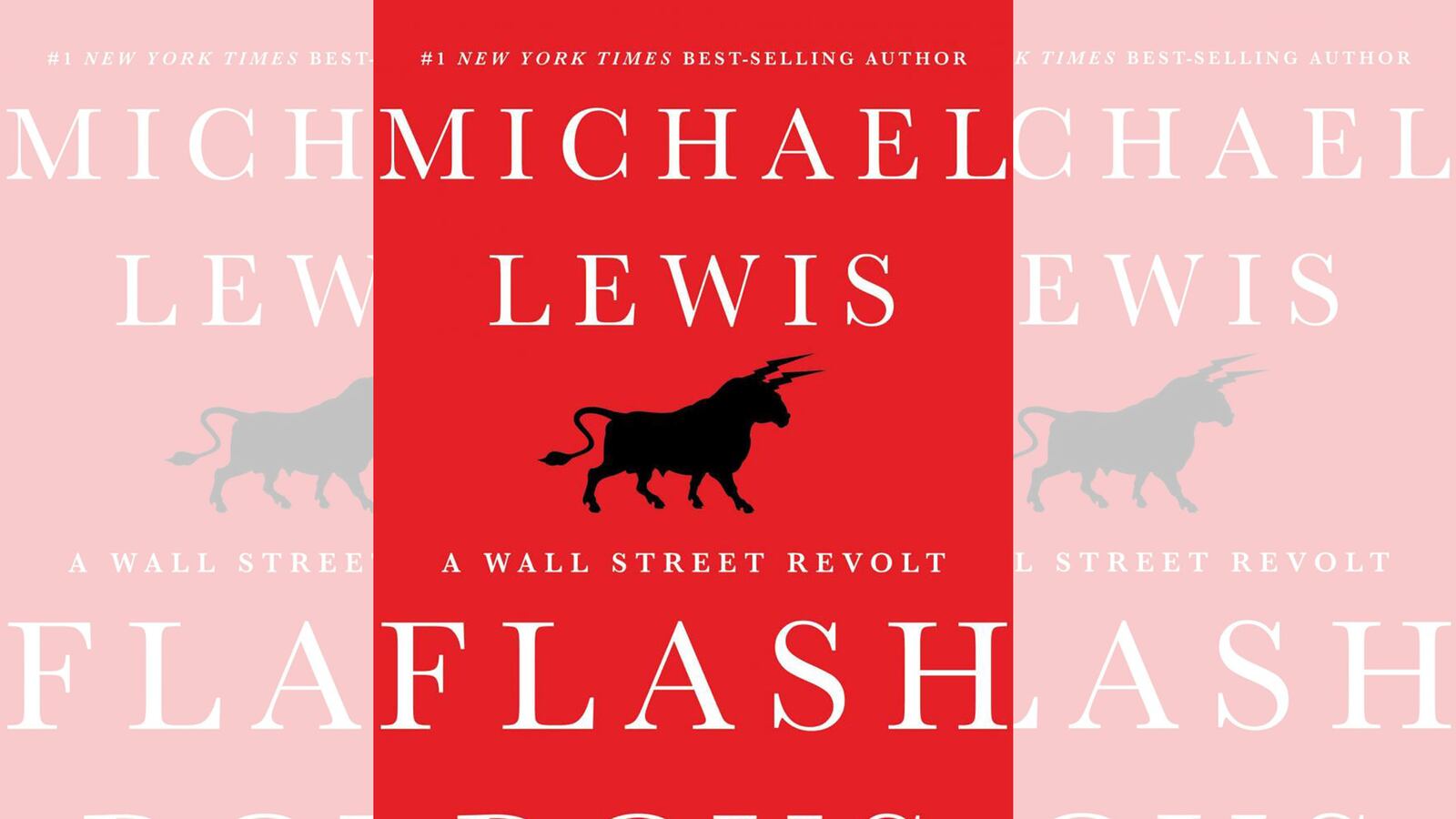Michael Lewis is out with his newest book on the whited sepulcher that is Wall Street. Titled Flash Boys: A Wall Street Revolt, this time Lewis trains his pen on the highly lucrative and ethically dubious business of high frequency trading.

High frequency trading which involves the use of advanced computers with complex algorithms, allows companies to use information that comes microseconds before others get it, and make trades that end up costing investors tens of billions of dollars, according to Lewis.
Much like his other books, Lewis tells the story through the lives of bit players caught up in the crapstorm of Wall Street, most notably in this case, stand-up former Royal Bank of Canada trader, Brad Katsuyama, who toiled away for years to uncover what was happening to markets after one day his trading screen in 2007 stopped allowing him to buy shares like he always had.
The book is also a whirlwind full of completely new terms for the average reader: things like dark pools, latency tables, Thor, spray router, matching engines, and maker-taker models. Here are some of the juiciest bits from the new book.
Wall Street is and isn’t on Wall Street anymore.
On the one hand, despite a globalized world and technological advances, it’s almost never been more important to be in New York or Chicago than before. In one story, a hedge fund in Kansas City “believed that it no longer mattered where they were physically located. That Wall Street was no longer a place.” Turns out, they couldn’t have been more wrong. Because while there are no longer adrenaline-filled men screaming on the floor of the New York Stock Exchange, “Wall Street was, once again, a place.” The reason is that since trading now is all about speed, and the length of fiber cables affects speed, proximity is king.
Only thing is Wall Street “isn’t actually on Wall Street now. It was in New Jersey.” It was now in giant black boxes that housed the exchanges and data centers in the state, which is often the focus of New Yorker disdain. In fact the stock market itself “was no longer a market. It was a collection of small markets scattered across New Jersey and lower Manhattan.”
You’ve never even heard of some of the big players.
A lot of the high-frequency traders, which Lewis asserts are at the heart of billions of dollars in costs are companies were unknown entities to many on Wall Street, let alone the general public. Companies (some now defunct) like Getco, Citadel, Hudson River Trading, Eagle Seven, Simplex Investments, Evolution Financial Technologies, Cooperfun, and DRW aren’t the bigshots featured in columns haranguing bankers in The New York Times. And yet at one point, says Lewis, Getco was responsible for 10 percent of the stock market.
There is a lot of ignorance.
Perhaps the largest blind spot in the public conscious is that “what people saw when they looked at the U.S. stock market—the number on the screens of the professional traders, the ticker tape running across the bottom of the CNBC screen—was an illusion.” No longer were those values reflective of the prices at which shares were being bought and sold in microseconds.
The book is also full of anecdote after anecdote of well-paid people who don’t have a clue. Major investors being taken for a ride. The people working in electronic training “had no clue how the technology worked.” Heads of markets who have no idea how to fix problems when they arise just say there was a “technical glitch.” Or in the case of the Russian programmer, Sergey Aleynikov arrested for allegedly stealing Goldman Sachs’ algorithm, the agency’s problem was “its own agent’s ignorance of the behavior to which Serge was attempting to confess.”
Even those making money from deals made with high-frequency traders had no idea if they were making as much as they should. Lewis tells the story of a man named Chris Nagy, worked for TD Ameritrade and made numerous handshake deals (so there were no email or phone call footprints) with HFTs to sell them rights to customers’ orders in return for x-number of cents per share. Except, Nagy had no idea if what they were charging the HFTs was at related to the amount the HFTs were making off of the information. “A lot of the people selling their customer’s orders, it seemed to Nagy, had no idea of the value of the information the orders contained.”
“Dark Pools” Are Just as Sketchy as Their Name Suggest
Sometimes it’s pretty astounding how unaware Wall Street is of it’s image. A large part of the book focuses on so-called dark pools, which are trading platforms separate from public exchanges like Nasdaq, where traders can buy and sell stock anonymously. The idea is that a major investor might want to quietly buy or sell large amounts of stock (which will eventually be disclosed) but doesn’t want the price to skyrocket or plunge as a result.
What has ended up happening, according to Lewis, is that the dark pools turned into a veritable hunting ground for high-frequency traders. He writes that the banks wanted the trades to occur in their pools in part “because they made more money—on top of their commissions—by selling the right to [high frequency traders] to exploit orders inside their dark pools.”
For example, Lewis points to Credit Suisse, which operated one of the biggest dark pools on Wall Street. First off, they hired Josh Stampfli to head up their electronic trading. Stampfli, it turned out, worked for seven years for Bernie Madoff. That caused one of the good guys in the book, John Schwall, to look further, and he discovered that the bank had placed high-frequency trading firms closest to the dark pool’s servers, likely allowing the microseconds of an advantage.
Stock exchanges are booming.
One of the more fascinating bits of the book has to do with the proliferation of exchanges on which stocks can be traded. In New York, where it used to be a game between Nasdaq and NYSE, thanks to free-market arguments, competitors like BATS or Direct Edge sprang up. In countries like Canada, Australia, and the UK, which had previously only had a single exchange, new exchanges would open up and be located somewhere different from the traditional location. In Sydney it was across the Harbor, in London it was outside the city in Basildon or Slough. What this did was create a market for those who could take advantage of the speed at which trades were being sent. In addition, notes one of the main characters, Ronan Ryan, “It was almost like they picked places to set up exchanges so that the market would fragment.”
Timing is everything.
They say baseball is a game of inches. Electronic trading is millionths of inches and millionths of second. In the book, Lewis details the lengths HFTs and banks will go over fiber-optic cables.
The book opens with the story Dan Spivey, and his quest to make a straight line from Chicago to New Jersey of fiber optics to gain his potential clients advantages of microseconds. The advantage, which would come after drilling through mountains, under rivers, and through towns, was so beguiling that a firm asked him to raise the price to discourage potential competitors.
HFT’s also created “latency tables” which showed the times for each brokerage house, which allowed the HFT’s to identify patterns for certain brokers.
One firm, when it had its servers modified to give it an advantage, required that Toys ‘R’ Us logos that covered the cage leftover from its previous owner stay in place so nobody could see the difference between their upgrades and the machine seven feet away.
The end result is that “the U.S. stock market was now a class system, rooted in speed, of the haves and have-nots. The haves paid for nanoseconds; the have-nots had no idea that a nanosecond had value.”






